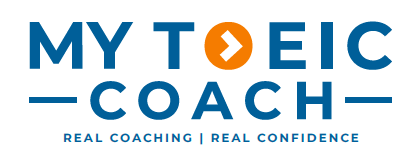📘 Why “It Was Approved” Can Still Be Wrong on TOEIC
How TOEIC Tests Your Understanding of What “It” Means
On TOEIC, sometimes the danger isn’t a long sentence or hard word.
It’s a tiny one — like it, they, this, or that.
These words seem harmless… until more than one thing they could refer to appears in the same sentence. That’s where TOEIC gets you.
1️⃣ The Vague Word Trap
Example:
The new guidelines were reviewed by the legal team before they were submitted.
🟥 Problem: Who is “they”? The guidelines? The legal team? Both?
If it’s not crystal clear, TOEIC will make it wrong.
2️⃣ What TOEIC Wants
They want you to pick the option where the meaning is clear — not just grammatically correct.
Clear:
The clients reviewed the proposal and decided to reject it. They disagreed with its terms.
✅ “They” = “The clients.” No confusion.
Unclear:
The proposal was shown to the team and the clients, but they had concerns.
🟥 “They” could be either group — unclear.
3️⃣ TOEIC-Style Example Question
The final report and the presentation were submitted on Friday. ___ was approved on Monday.
(A) It
(B) They
(C) He
(D) This
✅ Answer: (A) It — Refers to one thing, most likely the report.
❌ (B) They — Would mean both were approved, which isn’t stated.
❌ (C) and (D) — Don’t clearly match.
4️⃣ How to Spot the Right Choice
Whenever you see it, they, this, that, them, he, she:
Ask: “What exactly is this pointing to?”
Is it 100% obvious which thing it replaces?
If it could mean more than one, it’s a trap.
5️⃣ Quick Practice
Q1. The shipment and the invoice arrived together. ___ was delayed by customs.
(A) It
(B) They
(C) This
(D) He
✅ Answer: (A) It — Only one of them was delayed.
Q2. The manager spoke with the supplier and the client. ___ was unhappy with the delivery.
(A) It
(B) They
(C) This
(D) He
✅ Answer: (B) They — Both people were unhappy.
Q3. The team finished the proposal and the budget plan. ___ needs more detail.
(A) It
(B) They
(C) This
(D) He
✅ Answer: (A) It — Refers to one specific document.
📌 Strategy / Takeaway
Identify exactly what the small word replaces.
Make sure it can only mean one thing.
If there’s more than one possible meaning, it’s probably wrong.
Golden Rule:
If you’re not sure what a word refers to, TOEIC will punish you for it.
Final Word
TOEIC isn’t just checking if you know the word “it” — it’s checking if you can track its meaning without confusion. Always make sure the link is clear.
For more strategies and resources to master TOEIC pronoun traps, visit the English Library Collection and start locking in pronoun clarity confidence today.

